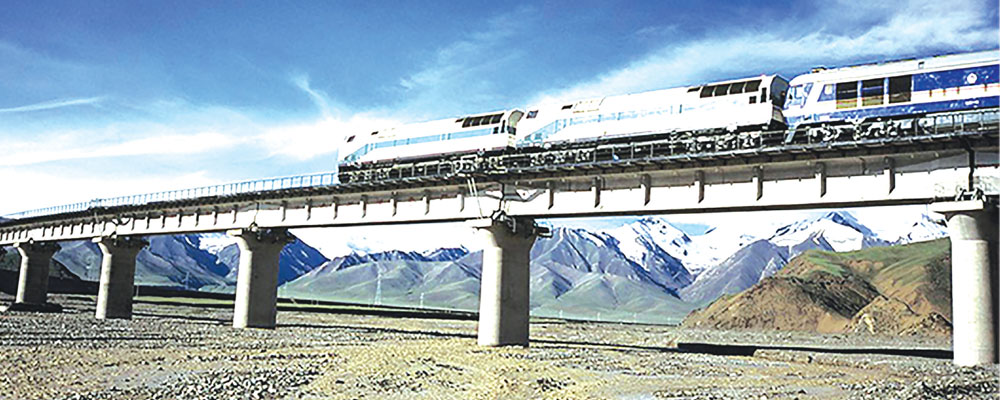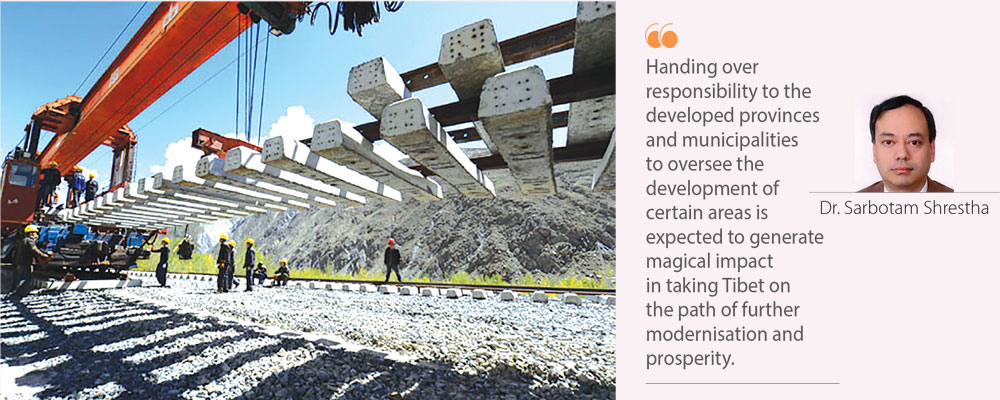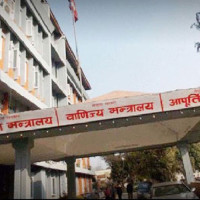- Wednesday, 26 November 2025
Tibet Making Transformative Leap Forward
Tibet, an autonomous region of China, has witnessed remarkable progress in recent times. Its development over the past decade has been more significant than the cumulative advancements made in the previous 50 years. Substantial improvements have been achieved in various sectors, including infrastructure, industrial growth, human development, economic expansion, cultural preservation, and tourism promotion.
In 2012, Chinese President Xi Jinping introduced a people-centred approach to development, which led to a strategic vision to rejuvenate the Chinese nation. President Xi wanted that Tibet should achieve moderate prosperity and move on the path of modernisation together with the rest of the country. After a decade, Tibet has witnessed the tremendous transformation of the Chinese nation from standing up to growing in strength, and they are now embarking on a new journey of building a modern socialist country in all respects.
New development strategy
The geographical condition of Tibet is very challenging. It lies at 3,500 metres above sea level and 3.6 million people have dispersed over 2,500,000 square kilometres. Economic development began soon after the development of Eastern China. The Chinese government has given special attention to new development strategies, physical infrastructure construction, the development of distinctive industries, regional development, rural development strategies, reform and open policies, and urbanisation strategies. Because of such master plans and programmes with development strategies, Tibet has undergone rapid economic development in recent years. The region took the lead in the growth rates of major economic indicators across the country in 2023. It has achieved a gross domestic product (GDP) growth rate of 9.5 per cent in 2023, compared to the national growth rate of 5.2 per cent.
Its GDP per capita exceeded 60,000 yuan. The per capita disposable income of urban and rural residents rose by 6.5 per cent and 10 per cent, respectively. The region's fixed-asset investment increased by 30 per cent, with investment in infrastructure up by 34.8 per cent and investment in areas related to people's livelihoods up by 31.8 per cent. Its retail sales increased by 22 per cent, and foreign trade surged by130 per cent compared to a year ago. The Tibet tourism industry set a historical record with tourist arrivals surpassing 55 million and tourism revenue hitting 65 billion yuan.

The railway tracks have increased from 521 km in 2012 to 1,359 km in 2022, making it the highest-altitude railway in the world. Similarly, the total length of highways has increased from 65,198 km to 121,447 km. The number of airports has risen from 5 to 7, and the number of mobile towers has risen from 7,000 to 61,900. Similarly, the average life span has increased to 72.19 years from 68.17 years in 2012. Urban employment has risen to 51,000 from 25,000. The number of health care providers per thousand people has increased to 7.17 from 3.67. The percentage of the population benefiting from the free education programme targeted for age groups has increased to 97.73 per cent from 80.05.
Exchange and cooperation with neighbouring regions and countries have been strengthened. Gyirong Port has been upgraded as an international highway port, realising the bilateral opening up between China and Nepal. In 2022, the total value of Tibet's foreign trade stood at 4.6 billion yuan, and its trading partners covered 95 countries and regions. Events such as the Forum on the Development of Tibet, the International Symposium of the Tibet Think Tank, the Tibet Tourism and Culture Expo, and the Trans-Himalaya International Extreme Cycling Race have become important platforms for promoting exchanges, mutual learning, and cooperation between Tibet and the rest of the world.
Recently, at the Tibet Tourism and Culture Expo, representatives and businessmen from Nepal, Pakistan, Sri Lanka, Iran, Afghanistan, Mongolia, and Japan participated in the event. The participants experienced the progress made by Tibet and emphasised the role of the Chinese government in implementing special policies for its development. It also provided insights into the future development plans of Tibet, generating opportunities for investment and collaboration.
The Chinese government has invested a substantial amount of money in the infrastructure development of Tibet, with an investment of 78.2 billion yuan during the 11th five-year plan (2006–2010 AD) and 3.16 trillion yuan during the 12th five-year plan (2011–2015). The 14th five-year plan, which started in 2021, includes 151 socio-economic developmental projects with a total budget of 6.015 trillion yuan for Tibet. Those projects include 22 frontier enhancement projects, 45 improving people’s living standards projects, 48 physical infrastructure construction projects, 14 environmental protection projects, 8 political and social management capacity building projects, and 14 distinctive industry development projects.
Magical impact
Apart from these, the Tibet government has proposed 393 projects costing 50 million yuan, which are spread in all seven zones. These projects include cultural tourism, greenery, distinctive agriculture and animal husbandry, modern service industries, clean energy, cross-border business and transportation, modern digital industries, traditional Tibetan medicine (TTM), and pharmaceutical industries. There are 5 such projects proposed in the Ngari zone, 15 in the Naqu zone, 46 in the Sigatse zone, 191 in the capital of Tibet, Lhasa, 42 in the Shannan zone, 47 in the Lingzhi zone, and 47 in the Changdu zone.
Besides the large physical infrastructure, other sectors like health, education, industry, and environmental protection in Tibet have been handed over to the developed and prosperous provinces, municipalities, departments, bureaus, and industries under the central government. The central government has assigned 17 provinces and municipalities, 77 public firms under the central government, and 27 financial firms and industries for the development of different parts and sectors of Tibet. Handing over responsibility to the developed provinces and municipalities to oversee the development of certain areas is expected to generate magical impact in taking Tibet on the path of further modernisation and prosperity. Nepal as an immediate neighbour should be able to take benefit from Tibet’s phenomenal growth.
(The author is a senior neurologist and the first vice-president of Arniko Society.)

















